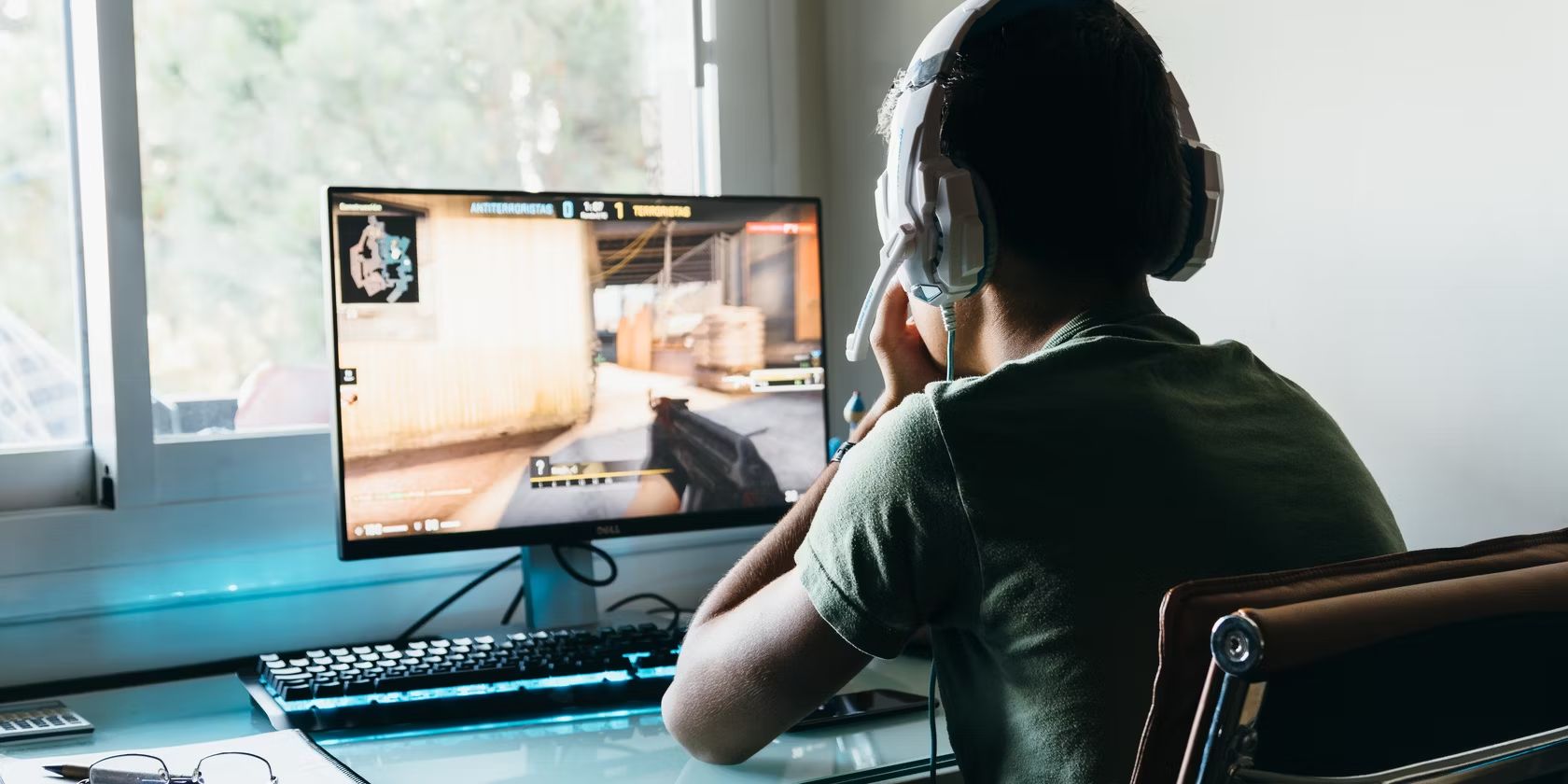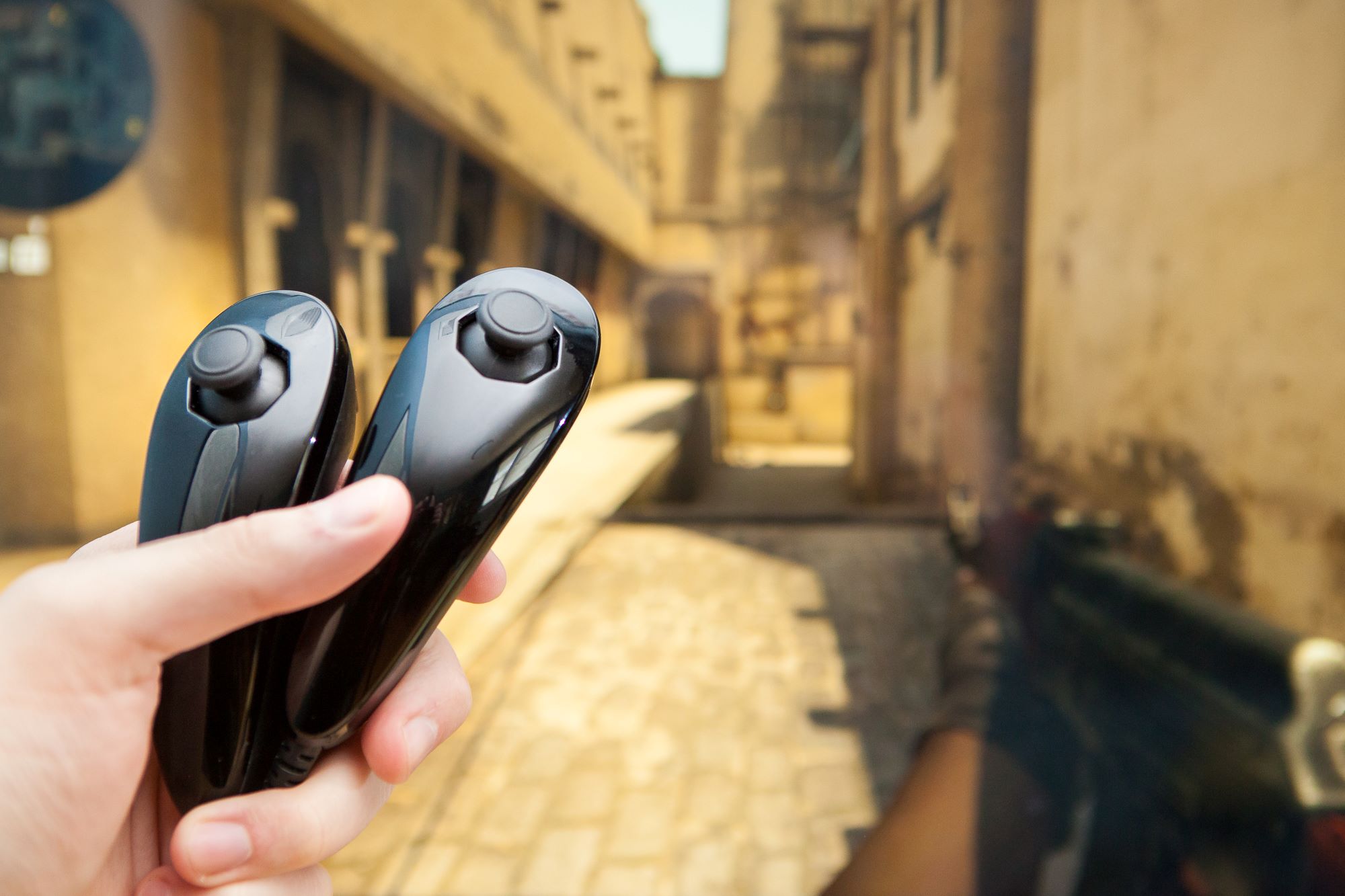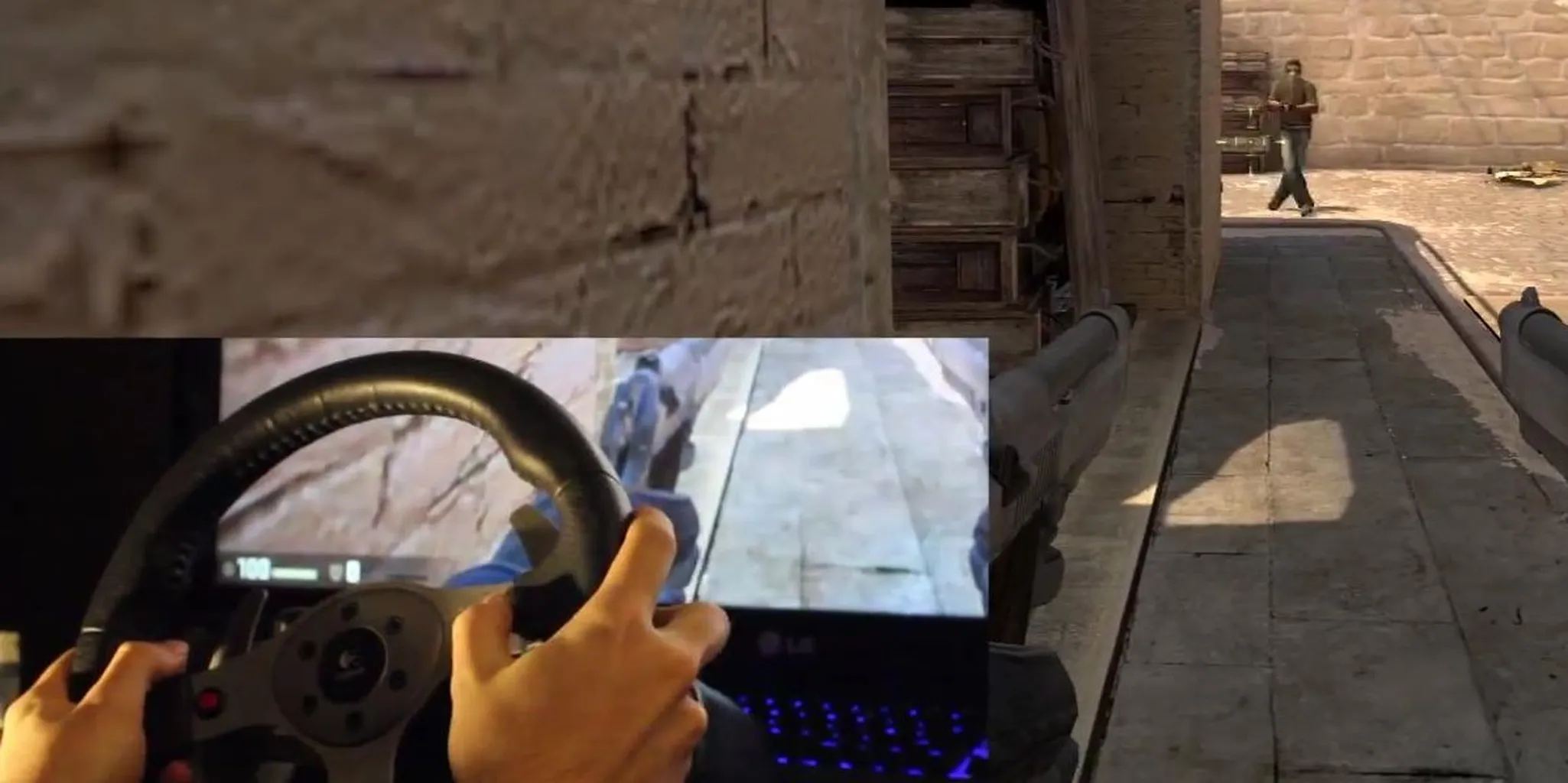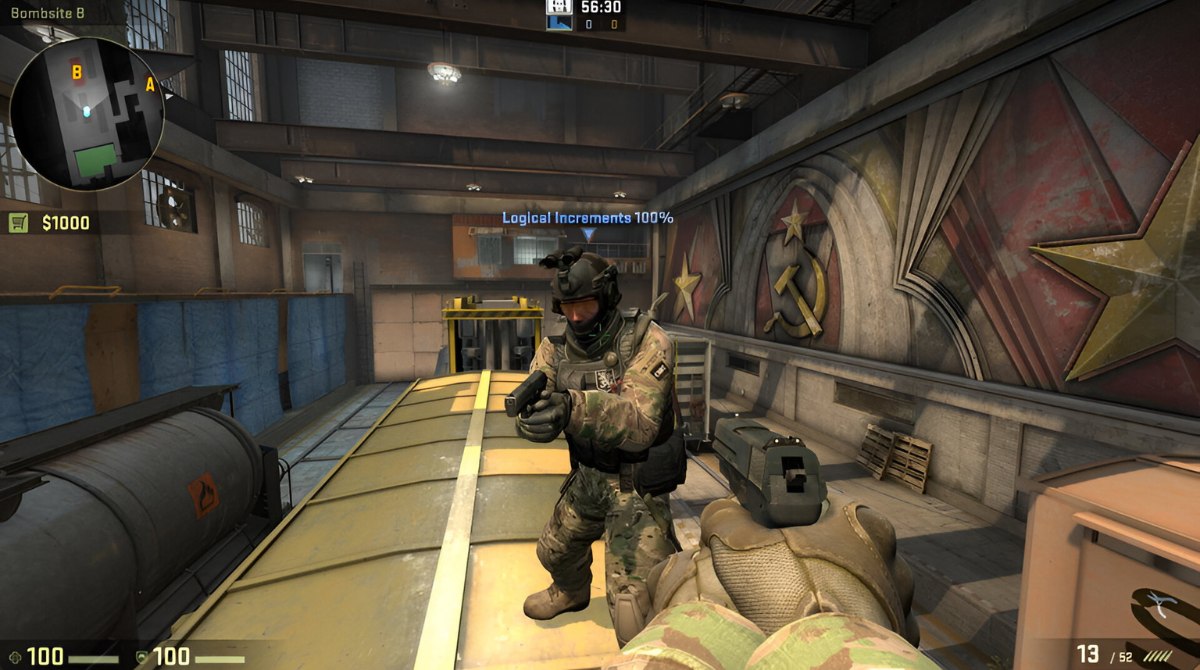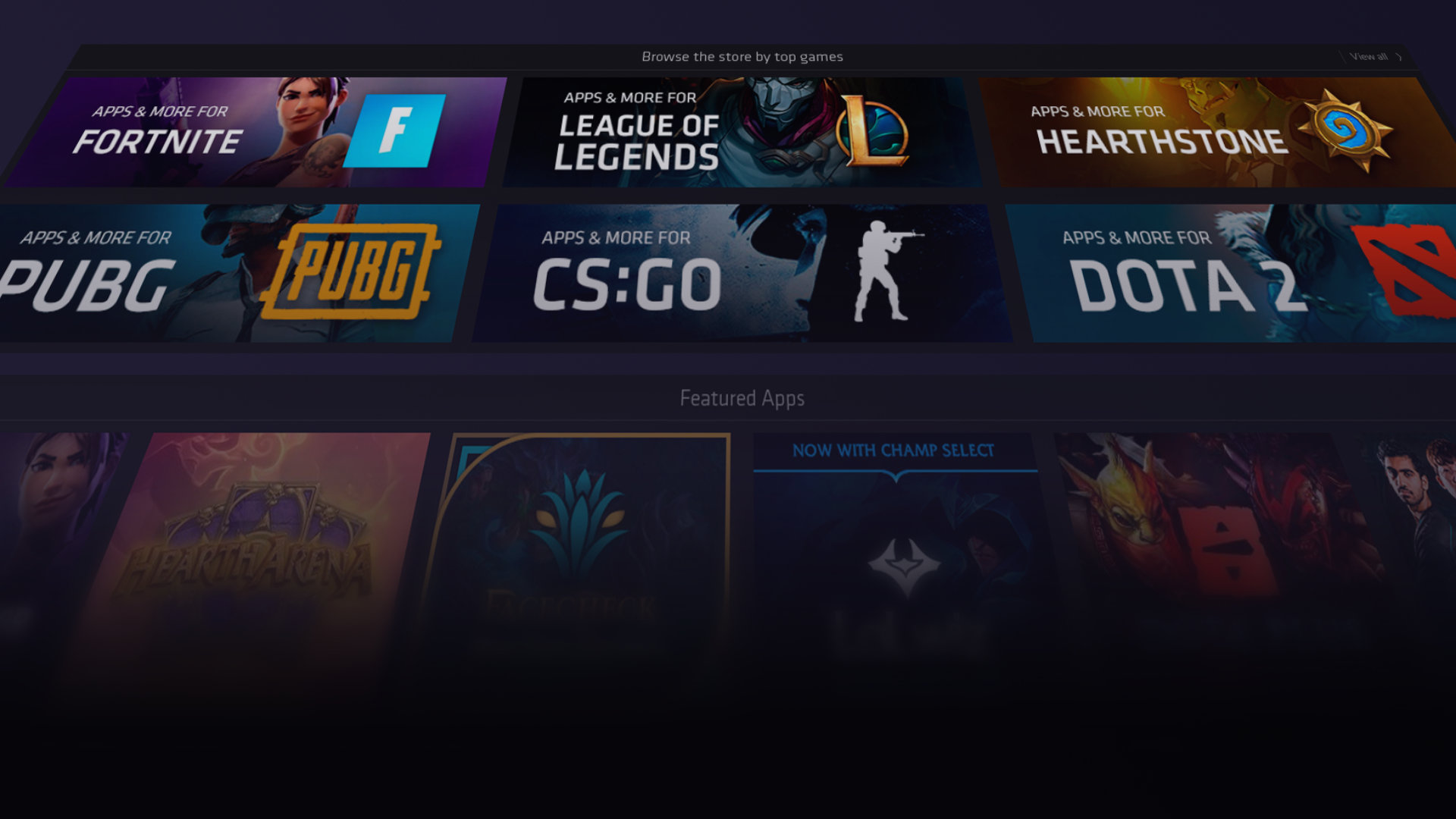Introduction
Welcome to the exciting world of Counter-Strike: Global Offensive (CS:GO), a fast-paced and highly competitive multiplayer first-person shooter game. In the world of CS:GO, effective communication is crucial for strategic team coordination, and having clear and crisp audio is essential for success. This is where a desktop USB microphone comes into play.
A desktop USB microphone is a versatile and convenient option for gamers who want to enhance their gaming experience and improve communication in CS:GO. Whether you’re playing casually with friends or competing in professional matches, investing in a high-quality desktop USB microphone can make a significant difference in your performance.
In this guide, we will explore why using a desktop USB microphone in CS:GO is beneficial, how to choose the right microphone for your needs, and the step-by-step process of setting it up and configuring it within the game. By the end of this article, you’ll have all the information you need to effectively use a desktop USB microphone to level up your CS:GO gameplay.
But why should you bother with a desktop USB microphone in the first place? Well, let’s delve into the advantages it brings to the table.
Why Use a Desktop USB Microphone in CS:GO
In the highly competitive world of CS:GO, effective communication is vital for success. Good teamwork and coordination rely heavily on clear and seamless audio communication between team members. This is where a desktop USB microphone becomes essential.
One of the primary reasons to use a desktop USB microphone in CS:GO is the significantly improved audio quality it provides. Built-in laptop or headset microphones may offer basic functionality, but they often lack the clarity and depth required for effective communication in a fast-paced game like CS:GO. A desktop USB microphone captures your voice with greater precision and accuracy, ensuring that your team can hear you loud and clear.
Another advantage of using a desktop USB microphone is its superior noise cancellation capabilities. Gaming environments can be noisy, with background sounds from fans, keyboards, or other distractions. A desktop USB microphone with advanced noise cancellation technology filters out unwanted background noise, allowing your teammates to focus solely on your voice without any interference.
Furthermore, a desktop USB microphone offers more flexibility in terms of positioning and adjustment. Unlike headset microphones that stay close to your face, a desktop USB microphone can be placed in an optimal position on your desk, ensuring the best sound capture while you maintain a comfortable posture. This allows for more natural and relaxed gameplay without compromising audio quality.
Another advantage of using a desktop USB microphone is the ability to customize and enhance audio settings. Many desktop USB microphones come with their own software or controls, allowing you to fine-tune settings such as microphone sensitivity, gain, and equalization. By adjusting these settings, you can optimize the microphone’s performance to suit your individual preferences and playing style.
Lastly, investing in a desktop USB microphone demonstrates your commitment to the game and to your teammates. It shows that you value clear communication and are willing to go the extra mile to improve your gaming experience. This level of dedication can enhance team dynamics, boost morale, and contribute to a more enjoyable and successful gaming session.
Now that we understand the benefits of using a desktop USB microphone in CS:GO, let’s move on to selecting the right microphone for your needs.
Choosing the Right Desktop USB Microphone for CS:GO
When it comes to selecting the right desktop USB microphone for CS:GO, several factors should be taken into consideration. Here are some key points to keep in mind to help you make an informed decision:
1. Purpose: Consider your specific needs and requirements. Are you a casual gamer or aspiring professional? Do you plan on streaming or recording gameplay videos? Understanding your purpose will guide you towards the right microphone with the necessary features.
2. Microphone Type: There are different types of desktop USB microphones available, including condenser microphones and dynamic microphones. Condenser microphones are more sensitive and capture a wider range of frequencies, making them ideal for capturing clear vocals and detailed sound. Dynamic microphones, on the other hand, are more robust and can handle louder sounds, making them suitable for gamers who tend to get intense during gameplay.
3. Audio Quality: Look for a microphone that offers high-quality audio capture. Check the frequency response range and sensitivity of the microphone to ensure it captures your voice accurately and with clarity. It’s also beneficial to read reviews and testimonials from other gamers to gain insight into the microphone’s audio performance.
4. Noise Cancellation: As mentioned earlier, effective noise cancellation is crucial in a gaming environment. Look for a microphone that has noise-cancelling features to minimize background noise and focus on your voice.
5. Connectivity: Consider the connectivity options of the microphone. Most desktop USB microphones connect via USB, making them compatible with various devices, including computers and gaming consoles. Check if the microphone is plug-and-play or if it requires additional software installation.
6. Ergonomics and Durability: Since you’ll be using the microphone during gaming sessions, consider its physical design and build quality. Look for features like adjustable stands, shock mounts, or pop filters to improve ease-of-use and durability.
7. Budget: Set a budget for your microphone purchase and explore options within that price range. While it’s important to invest in a quality microphone, it’s also essential to consider your financial limitations.
By considering these factors, you can narrow down your options and select the desktop USB microphone that best suits your gaming needs. Once you have your microphone, it’s time to set it up for CS:GO, which we’ll cover in the next section.
Setting Up Your Desktop USB Microphone for CS:GO
Now that you have chosen the perfect desktop USB microphone for your CS:GO gaming sessions, it’s time to set it up and optimize its performance within the game. Follow these steps to get your microphone ready:
1. Unboxing and Inspection: Carefully unbox your microphone and inspect its contents. Ensure that all the components, such as the microphone itself, the USB cable, and any additional accessories, are in good condition.
2. Connecting the Microphone: Locate an available USB port on your computer or gaming console and connect the USB cable from the microphone to the port. The device should be automatically detected and installed by your system.
3. Adjusting Microphone Placement: Position your desktop USB microphone at a comfortable distance from your mouth. Make sure it is stable and secure to minimize any unnecessary movement or vibrations during gameplay.
4. Testing Audio Levels: Open your computer’s sound settings or system preferences and navigate to the input or microphone options. Speak into the microphone and observe the audio levels. Adjust the microphone gain or sensitivity settings to achieve optimal audio levels without distortion.
5. Configuring Windows Settings: If you’re using a Windows operating system, right-click the speaker icon on the taskbar and select “Sounds” or “Recording devices”. In the pop-up window, locate your microphone and set it as the default recording device. You can also access additional microphone settings and adjust them to your preference.
6. Configuring CS:GO Settings: Launch CS:GO and navigate to the audio settings. Locate the microphone settings and select your desktop USB microphone as the input device. Adjust the microphone volume or gain within the game to ensure it matches your preferred audio levels. You can also explore additional audio settings, such as push-to-talk options, to further enhance your communication experience.
7. Testing the Microphone in CS:GO: Enter a practice game or join a server to test your microphone within CS:GO. Communicate with your teammates and listen for any issues or adjustments that may be required. Take the time to fine-tune your microphone settings to achieve the best audio quality and clarity.
By following these steps, you can properly set up your desktop USB microphone for CS:GO and ensure seamless communication with your teammates. Now, it’s time to dive into the microphone settings within CS:GO to optimize your audio experience, which we’ll discuss in the next section.
Configuring Your Microphone Settings in CS:GO
Once you have your desktop USB microphone set up and connected in CS:GO, it’s important to configure the microphone settings within the game to ensure optimal audio performance. Follow these steps to configure your microphone settings in CS:GO:
1. Launch CS:GO: Open the CS:GO game on your computer and access the main menu.
2. Navigate to Audio Settings: Within the main menu, navigate to the “Options” or “Settings” submenu, and locate the “Audio” or “Sound” options.
3. Select Microphone Input Device: Within the audio settings, locate the section related to microphone input. From the drop-down menu, select your desktop USB microphone as the input device.
4. Adjust Microphone Volume and Sensitivity: Depending on your preferences and the sensitivity of your microphone, you may need to adjust the microphone volume within CS:GO. Increase or decrease the microphone volume until you achieve appropriate audio levels.
5. Enable Push-to-Talk: If desired, you can enable the push-to-talk feature in CS:GO. This allows you to control when your microphone is active by pressing a specific key. Configure the push-to-talk key in the game settings to ensure easy access during gameplay.
6. Test Microphone Settings: Enter a game or join a server to test your newly configured microphone settings. Communicate with your teammates and listen to ensure that your voice is clear and audible. Make any necessary adjustments to the microphone settings or volume within CS:GO to achieve optimal audio clarity.
7. Fine-tune as Needed: Throughout your CS:GO gaming sessions, periodically check your microphone settings and make any necessary adjustments or refinements. Experiment with different sensitivity levels or push-to-talk settings to find the configuration that works best for you.
By configuring your microphone settings within CS:GO, you can ensure that your desktop USB microphone is optimized for clear and effective communication with your teammates. Take the time to experiment and fine-tune your settings until you achieve the desired audio quality.
Now that your desktop USB microphone is properly configured within CS:GO, let’s move on to the next section where we will discuss how to test and troubleshoot your microphone to address any potential issues that may arise.
Testing and Troubleshooting Your Desktop USB Microphone in CS:GO
After setting up and configuring your desktop USB microphone in CS:GO, it’s essential to test its functionality and troubleshoot any potential issues that may arise. Here are some steps you can follow to test and troubleshoot your microphone:
1. Test in a Local Game: Start by entering a local game in CS:GO. Communicate with your teammates and check if they can hear you clearly. Ask for confirmation to ensure that your voice is audible and not distorted.
2. Check Microphone Volume: Make sure that your microphone volume is set appropriately in both the CS:GO settings and your computer’s sound settings. Ensure that the volume is not too low, causing your voice to be barely audible, or too high, resulting in distortion.
3. Test in Online Matches: Join an online match or server and communicate with your teammates using the microphone. Pay attention to any issues with audio quality or clarity. If your teammates report difficulty hearing you or mention any unusual sounds, take note for further troubleshooting.
4. Check Audio Settings in CS:GO: Double-check the microphone settings within CS:GO to ensure that your desktop USB microphone is selected as the input device. Verify that any push-to-talk settings are properly configured and that the correct key or button is assigned for activation.
5. Update Drivers and Software: If you experience persistent issues with your microphone, make sure that your drivers and software are up to date. Visit the manufacturer’s website or use appropriate software to check for any available updates for your microphone.
6. Test Microphone on Other Applications: Try using your desktop USB microphone on other applications or software outside of CS:GO. This will help determine if the issue is specific to CS:GO or if it persists across multiple platforms. If the microphone works fine in other applications, the problem may be related to CS:GO settings or configurations.
7. Seek Support: If you have performed all the troubleshooting steps and are still experiencing issues with your desktop USB microphone in CS:GO, consider seeking support from the microphone manufacturer or the CS:GO community. Online forums, support centers, and social media groups can provide valuable insights and assistance from experienced users who may have encountered similar problems.
By testing and troubleshooting your desktop USB microphone in CS:GO, you can address any issues that may arise and ensure consistent and clear communication with your teammates. Always explore different solutions and seek assistance when needed to optimize your microphone’s performance.
With your microphone now tested and in working order, let’s wrap up this guide by summarizing the key points discussed throughout this article.
Conclusion
Using a desktop USB microphone in CS:GO can greatly enhance your gaming experience by improving communication with your teammates. The benefits of a desktop USB microphone include superior audio quality, noise cancellation, flexibility in positioning, and the ability to customize settings. These advantages contribute to clearer and more effective communication, leading to better teamwork and performance in CS:GO.
When choosing a desktop USB microphone, consider factors such as purpose, microphone type, audio quality, noise cancellation, connectivity, ergonomics, and budget. Selecting the right microphone that suits your specific needs will ensure optimal results during gameplay.
Setting up and configuring your desktop USB microphone in CS:GO involves connecting the microphone, adjusting its placement, testing audio levels, configuring settings in both your computer and CS:GO, and fine-tuning as needed. Taking the time to properly set up and optimize your microphone will lead to a seamless and enjoyable gaming experience.
After setting up your microphone, it’s crucial to test its functionality and troubleshoot any issues that may arise. Test your microphone in local and online matches, check volume levels, verify settings, update drivers and software, and seek support if necessary. By addressing any problems, you can ensure crystal-clear communication with your teammates in CS:GO.
In conclusion, a desktop USB microphone is a valuable investment for CS:GO gamers who prioritize effective communication. By selecting the right microphone, setting it up correctly, configuring the settings, and testing for functionality, you can enhance your gaming experience, improve team coordination, and ultimately elevate your performance in CS:GO.







